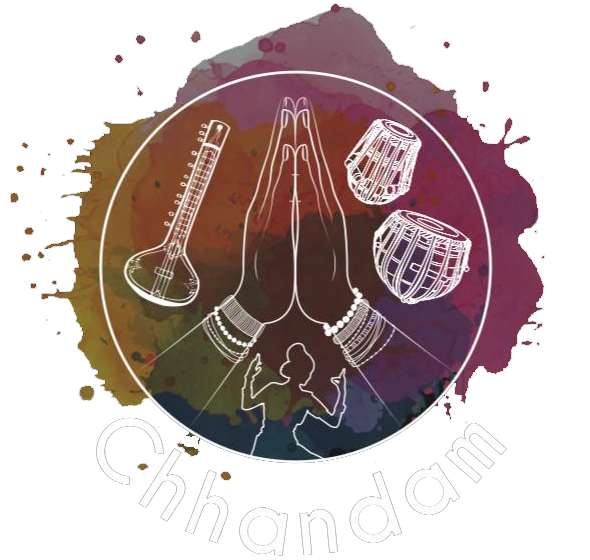a Musical Festival of Flowers
From the 19th Century Delhi
Of the Last Mughal Emperor Bahadur Shah Zafar
The theme for this show is based on the beautiful but relatively unknown story of Phoolwalon ki Sair which is a unique and beautiful celebration of friendship between all religions and communities.
When the son of Emperor Akbar Shah II, Mirza Jahangir, took a shot at British Resident Archibald Seton, for printing British coins without the Emperor’s image – it only dislodged his hat. The Resident had Mirza Jahangir exiled to Allahabad and Mumtaz Mahal, wife of the Emperor, vowed to lay flowers at the tomb of Khwaja Qutub-uddin Bakhtiar Kaki if her son returned from exile.
After Akbar Shah’s death, Bahadur Shah Zafar ascended the throne and started an annual festival of Phool Walon ki Sair. Every year flower–sellers in Mehrauli go in a procession from Devi Yogmaya’s temple through Mehrauli bazaar to the sufi shrine of Khwaja Bakhtiar Kaki carrying flowers, chadars and pankhas (fans) made from palm leaves, tinsel and flowers. A concert based on classical bandishes, Kathak and Qawali takes place at the Emperor’s palace at Jahaz Mahal on the banks of the Shamsi Talab.
The entire story is told through a period English play based in nineteenth century Mughal Delhi. The highlights are Hindustani classical music compositions and dances interspersed with poetry from Ghalib and dohas from Kabir.
First presented on
Saturday 14th October,2017
at
Bhavan Centre, West Kensington
Written & Directed by: Bhaskar Dasgupta
Produced by: Dalia and Bhaskar Dasgupta
Original compositions by: Arup Banerjee
Original Bandishes: Dhrupad, Dhamar, Dadra from Sages of Ancient India
Actors: Ananda Gupta, Jennifer Ball, Priyanka Bashyam, Molay Bhadra, Deep Dasgupta, Kanchan Dasgupta, Srabantika Dasgupta, Nick Howard, Asim Khureshi, Ballari Sengupta, Sutanu Sarkar
Dancers: Ananya Chatterjee, Showmi Das, Suchismita Ganguly, Ashwini Kalsekar, Jahan Minal Joshi, Manisha Mane, Meghana Nikam, Vandana Nilesh, Kalyani Peshwe Krishna Priya, Soumya Rao, Deepa Sadgopan, Adhya Shastry
Instruments
Tabla, Khol: Aniruddha Mukherjee
Flute: Clive Bell
Harmonium: Dalia Dasgupta
Keyboard: Amith De
Esraj: Tirthankar Roy
Sitar: Mahboob Nadim
Vocalists: Pratyusha Chaudhuri, Bhaskar Dasgupta, Dalia Dasgupta, Pooja (Shruti) Dasgupta, Ananda Gupta, Nick Howard, Mamata Lahiri, Ballari Sengupta
Management committee: Bhaskar Dasgupta, Dalia Dasgupta, Ananda Gupta, Mamata Lahiri, Sunith Lahiri
Powerpoint Presentation: Bipashyee Ghosh, Ayan Sengupta, Bhaskar Dasgupta
Volunteers: Sudeshna Dasgupta, Bipashyee Ghosh, Ayan Sengupta, Molay Bhadra, Sutanu Sarkar, Shubhangi Dasgupta
FIRST HALF
Act 1: Setting the context
Act 2: Court of Akbar Shah II, conversation between Akbar Shah with the
British Resident Archibald Seaton and Mirza Jahangir, Akbar Shah’s son
Act 3: Announcement from the East India Company about banishing
Mirza Jahangir to Allahabad Jail for his remaining life’
Song 1: Tuma bina kaun leta kabhara mori
Song 2: At the Darga of Khwaja Bakhtyar Kaki, a Sufi song:
Diwaney hai terey diwaney tujh sey
Act 4: Conversation between the new ruler Bahadur Shah Zafar
and his Mother Mumtaz Mahal
Song 3: Ghazal- Daaim para huya terey dar par – with dance
Song 4: Phoolawaaley kaunda mai – with dance
Song 5: Keye nibi phool, keye nibi phool – with dance
Song 6: Phoolawa binata dara dara
Act 5: A scene between the British Resident and his wife Julia
Song 7: ‘Cos you are / a dream my maid / beyond my life / my Julia
Act 6: Bahadur Shah’s inner court room – common man sets the scene
Music starts with harmonium and peshkar on the Tabla, enter Kathak
dancers Kathak and Tarana
Song 8: Tarana with kathak dance and bols
Song 9: Lalaji na karori – Dhamar with dance
Song 10: Hori Thumri: Kaun Tarasa tuma khelata holi
Song 11: Nazrul: Kumkum Abiro phagey – with dance
Act 7: Bahadur Shah converses with musicians and the poet Ghalib in his court
Song 12: Lagta nahin hai dil mera ujre dayar mein,
Song 13: Babul mora naihara chooto hi jai
SECOND HALF
Act 1: Starts with lights showing early dawn, rising sun,
Song 1: Kadachita karanditata – sloka with dance
Act 2: Bahadur Shah speaks with Ghalib and observe Flower sellers’ pageant
Song 2: Dhono Dhanye pushpe bhora, amader eyi boshundhora
Song 3: Tanaki Dhanaki – with dance
Act 3: Phool Walon ki Sair procession continues waving floral pankhas, chadar
Song 4: Dhitang dhitang bole – with dance
Song 5: Jejuri sama Punyakhetrahya nahi dharani vari – folk song and dance
Act 4: Ecstasy of Creation (Shristi shukher ullaashe)
Followed by a scene between Bahadur Shah Zafar and his wife Zeenat Mahal
Song 6: Mor Priya hobey esho rani – with dance
Song 7: Beni nirakhata bhujanga – dhrupad with dance
Song 8: Sundara lala – with dance
Song 9: Dhira sameerey – with dance
Song 10: Niratata Dhanga – with dance
Song 11: Atulprasad sangeet
Act 5: Common person setting context about key messages
of the phulwalon ki sair
Song 12: Ghazal, Nazm uljhi hui hai – with dance
Song 13: Mridu bhabon key angoonro key – with dance
Song 14: Qawwali
Song 15: Brindavani Sarang – short khayal
Act 6: Siege of Delhi: Scene between Bahadur Shah and Archibald Seaton
Song 14: Aiso nidara mose maaney nahi batiyan – with dance
Act 7: Elliott’s ‘Little Gidding’ followed by announcement of Zafar’s death
Song 15: Ghazal ‘Daaley huye Gardan – written by Zafar
